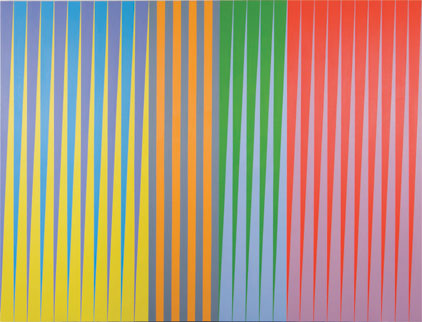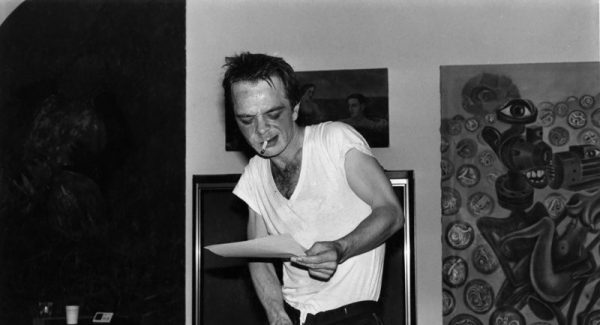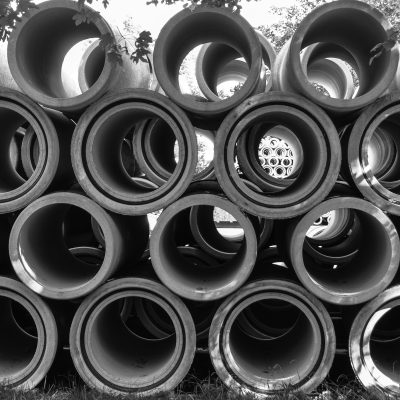DeviantArt is the world’s ‘largest online community of artists and art-lovers’ and its thirteenth largest social network. Its forty million members contribute to a collection of ‘over 336 million original works of art’[1] at the site’s last count, with two million visiting the site to upload an average of 80,000 works of art each day. By contrast, the Smithsonian, the world’s largest museum and research complex, holds in its archives 156 million artifacts, works of art and specimens. To invoke instances of the numerical sublime is as much a cliché of art writing about the internet as it is one of popular science programmes about the universe, but the comparison between the holdings of these online and IRL institutions allows us to consider how their different infrastructures of access and exchange are revolutionising the way images are read. DeviantArt is, furthermore, the realm of the popular image. Largely the preserve of illustrators, computer programmers and digital image-makers producing flash animations, character designs, digital renderings, and adjusted photographs, the site’s predominant style is ‘fantasy art’ —imaginary landscapes, fantastical creatures — while fan art, character design, illustration and manga are also much in evidence. Its contents offer more direct access to the twenty-first-century global imagination than any contemporary museum or gallery, no matter how devoted to blurring the division between high and low art.
The site is organised along lines familiar to any member of a social network. After being asked whether you are primarily interested in ‘discovering’, ‘selling’ or ‘improving’ your art, and putting together a crude social profile, you are redirected to a homepage with a seemingly infinite scroll of thumbnail images. These are the latest uploads by other members of the community, and clicking on one takes you to a screen where you can see more work by that particular ‘Deviant’. Clicking on ‘more work like this’ is the entrance to a labyrinth of endlessly ramifying pathways, selected either by following categories or by clicking on successive images, to lead you into the international pictorial unconscious.
Illustrations of impossibly busty prepubescent girls, waiflike elves and extravagantly muscled cartoon characters are popular, and it’s hard not to feel voyeuristic[2] when navigating through the pubescent angst captured by these bodily dysmorphic illustrations and the comments that accompany them. That much of the work on display is clichéd, bland or worse is hardly surprising given the volume uploaded each day, but its failings are not so much technical — when you consider that no qualifications or peer validation are required to upload work to the site, then it’s startling how high a percentage of the drawings demonstrates at least a rudimentary talent for line or a basic training in illustration or composition — as imaginative. There are no figures for the demographic constitution of DeviantArt, but one assumes that a significant portion of its membership is wrapped up in the first, confused flushes of desire.
The forums, which hark bark to earlier days of the internet in their aesthetics and will conjure a certain nostalgia for anyone who first spent time online in the mid-to-late 1990s, both support and complicate this initial impression. As is true of wading through the site image-by-image, greater exposure to the discussions and texts reveals a sincere engagement with the fundamental issues of what it means to ‘make art’ or ‘be an artist’ that is both refreshing and illuminating. I was intrigued to stumble upon a short text, gallery of related images and discussion board relating to Georgia O’Keeffe and Alfred Stieglitz, taking as a framework the issue of whether romantic relationships between artists are productive or stifling. The question of whether ‘love or art takes priority in an artist’s life’ might sound gauche, but the responses were on point:
missatomicbombs Mar 2, 2015 (Student General Artist)[3]: o’keefe and stieglitz both seemed to deprive their relationships of important things, but to me, painting and photography go hand in hand… ; brechdaslicht Feb 26, 2015 (Hobbyist General Artist) … creating art makes me happy and being in a relationship (with the right person) makes me happy, but when I’m in a relationship I rarely draw. So I guess you could say I suppress a part of my identity in order to focus all of my attention to the person I love … ; eawood Feb 26, 2015: I often begin a project because of a strong emotional impulse and then become deeply entangled in it. Even though I might initially begin working because of feelings I had for someone else, I will eventually reach a point where I’m working on it purely for myself.
Another such discussion, dedicated to the question ‘If you could hijack a television broadcast, or a closed circuit camera display monitor, what would you show?’ (posted by superftmn, who identifies as a ‘hobbyist traditional artist’) prompted several ideas for moving-image works that brought to my mind the back catalogue of Martin Creed or Bruce Nauman. Another, entitled ‘The Effects of White Guilt’, took for a starting point precisely the type of racist screed about ‘white pride’ that one would expect either to be hurriedly taken down or else to prompt all kinds of back-and-forth accusations. Yet the responses were more honest than any number of broadsheet opinion pieces, and even prompted some pithy wisdoms: LizzyChrome 10 hours ago (Hobbyist General Artist): We all could use a bit of guilt.
DeviantArt’s most valuable function might be the establishment of arenas for discussion in which creative individuals, precisely because provided with the degree of anonymity allowed by the site’s format, might be able to express their attitudes (whether in images or texts) without fear of contradicting prevailing wisdoms, in a space removed from tightly policed standards and trends. The pressures on artists to conform have recently become overwhelming, and spaces like DeviantArt offer one way out.
That returns us to the question of whether it is reasonable to pass judgment on the works posted here using the criteria as we might apply to work being sold in galleries or exhibited in institutions. While some work here stands up to, and rewards, such scrutiny, it seems fairer to concede that the site does not really exist to solicit critical approval, and it would be absurd to suggest that all the ideas and images uploaded here should be subject to it. That the mainstream discriminates against populist art, and that this fact reflects tellingly on the mechanisms governing critical opinion, is a familiar argument, but not one that it is appropriate to rehash in the context of several hundred million different examples of wildly diverging quality. Instead, DeviantArt’s first purpose seems to be uncritically to gather and share the type of emotionally wrought and intricately considered images that have been made by introverted, sensitive young people ever since they were first provided with sketchbooks and private bedrooms.
Yet it is also a marketplace and exhibition space. Many artists make their work available to purchase as prints on paper or canvas, others use it as a store window to attract potential clients for their illustrations or skins, and some offer to fulfil commissions. The site is in this respect symptomatic of shifts in the broader creative economy towards a freelance labour model, involving the monetisation of whatever skills one possesses. Divisions between personal and professional are (on this site as much as in life) blurred, because the purely social and communitarian functions of the network are shadowed — financially and ideologically — by commercial possibility. The impulse to post an image might be motivated purely by the desire for validation or catharsis through shared self-expression, but also allows for the possibility that the work will be transformed into capital, whether directly through the sale of a print or indirectly through a future commission by a client impressed by a portfolio. The likelihood of this happening might be vanishingly small, and many of the artists don’t take advantage of the option to enable the work to be purchased as prints or hi-res digital downloads (as well as postcards, mugs, or magnets), but it remains integral to the site that this creative work can be monetised. The aim is to create an alternative (and direct) market for the exhibition and sale of art.
For all that the possibility of commercialising one’s work seems to be one of the site’s main appeals to its members, it is relatively insignificant to the company’s financial health, which depends instead upon banner advertising, premium subscriptions, contests, and branded retail. The pressure to operate as a marketplace comes at least as much from those Deviants who aspire to make money from their work as from the website’s commercial stakeholders. This might partly explain why the site offers scant protection to its artists against exploitation, which has produced a series of controversies: it goes without saying that a vast store of images which come accompanied by what amounts to a comprehensive feedback survey and popularity rating would make an attractive resource for vendors looking for saleable images to reproduce as merchandise. The message boards are also full of a more familiar feature of artist communities, namely accusations by one Deviant against another of plagiarism and assertions of creative primacy.[4]
In its undercurrent of desire for recognition by the market, DeviantArt resembles MySpace before its precipitous decline. The difference is that a commercially and critically successful artist has yet (to my knowledge) to have used fame on the message boards as the springboard for a leap into the commercial and critical mainstream in the same manner as Lily Allen or My Chemical Romance. The most obvious obstacle to that transition is that popularity does not translate in the art market into commercial viability: while most members of these communities might be able to afford a CD (as was) or download, few could pay the prices for individual works necessary to support the infrastructures of commercial galleries operating under the traditional model. This means that there is little incentive for IRL dealers to keep a close eye on the forums, and also suggests that — while it faces innumerable other challenges — the conventional art market is unlikely to suffer the same fate by the same means as the music industry, for which social networking sites spelled the beginning of the end.
Which is not to say that DeviantArt will not exert a considerable influence over the practice of contemporary art, meaning that sphere of image production supported by the established critical, commercial, educational and institutional infrastructure. In its aesthetic and conceptual incoherence, its peculiar and pervasive obsession with imagined bodies, its conflation of creative expression and commercial labour, its endless anxiety over peer approval, its flash trends and indifference to established opinion, the site presents a more comprehensive appraisal of twenty-first-century existence as realised in images than could ever be offered by any single artist or institution. More democratic or populist visual media — comic books, advertisements, gig posters, cartoons, video games, zines — have long proven valuable resources for artists seeking access to a society’s unconscious. As a publishing platform and online archive, DeviantArt offers the most direct imaginable insight into the way that a generation raised online thinks and sees.
[1] This expanded definition of works of art extends to skins, wallpapers and digital drawings, alongside more traditional media, all rendered onscreen in jpegs or gifs.
[2] This is particularly true in my capacity as an observer of, rather than active contributor to, the community.
[3] These are the commenters’ own descriptions.
[4] There are also the intractable problems that afflict sites of this kind whatever their focus. Groups, for instance, can soon be hijacked by spam posters. Comments sections — while generally supportive of the work on the screen — are subject to the same tendencies toward bullying, inanity and point-scoring, while the practice of ‘favouriting’ works engenders the same economy of likes and clicks that skews news sites like the Daily Mail as much as social media sites like Facebook.




